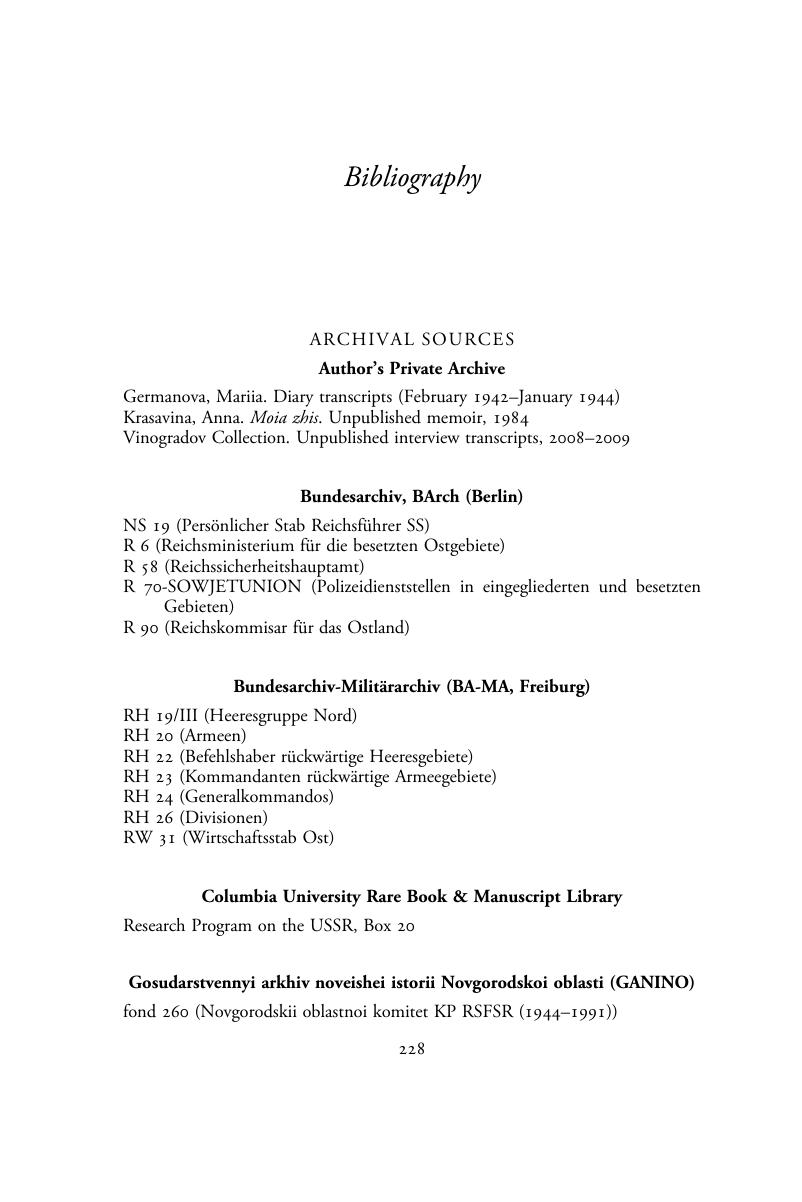Book contents
- Soviet Russians under Nazi Occupation
- New Studies in European History
- Soviet Russians under Nazi Occupation
- Copyright page
- Dedication
- Contents
- Figures
- Maps
- Tables
- Acknowledgments
- Note on Translation and Transliteration
- Chronology of Military Events
- Glossary and Abbreviations
- Introduction
- Chapter 1 Life in the 1930s and the Limits of Stalinist Civilization
- Chapter 2 Hopes and Fears
- Chapter 3 Facing Annihilation
- Chapter 4 The Ghost of Hunger
- Chapter 5 “More meat, milk, and bread than in the Stalinist kolkhoz”
- Chapter 6 Religious Revival and the Pskov Orthodox Mission
- Chapter 7 Relating to German and Soviet Power
- Chapter 8 Hopes and Fears, Revisited
- Conclusion
- Bibliography
- Index
- References
Bibliography
Published online by Cambridge University Press: 29 June 2018
- Soviet Russians under Nazi Occupation
- New Studies in European History
- Soviet Russians under Nazi Occupation
- Copyright page
- Dedication
- Contents
- Figures
- Maps
- Tables
- Acknowledgments
- Note on Translation and Transliteration
- Chronology of Military Events
- Glossary and Abbreviations
- Introduction
- Chapter 1 Life in the 1930s and the Limits of Stalinist Civilization
- Chapter 2 Hopes and Fears
- Chapter 3 Facing Annihilation
- Chapter 4 The Ghost of Hunger
- Chapter 5 “More meat, milk, and bread than in the Stalinist kolkhoz”
- Chapter 6 Religious Revival and the Pskov Orthodox Mission
- Chapter 7 Relating to German and Soviet Power
- Chapter 8 Hopes and Fears, Revisited
- Conclusion
- Bibliography
- Index
- References
Summary

- Type
- Chapter
- Information
- Soviet Russians under Nazi OccupationFragile Loyalties in World War II, pp. 228 - 245Publisher: Cambridge University PressPrint publication year: 2018



